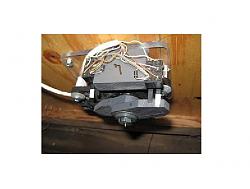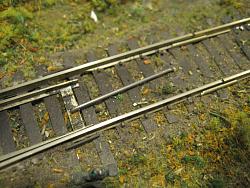A tapping guide is used to keep a tap straight when it's not possible to mount the work on the lathe or mill. The simplest style is nothing more than a block of metal with a hole to match the tap diameter drilled through. While that works, it doesn't support the tap wrench so it's still possible to put undue side pressure on the tap and break it.
Professional guides like the black one in the picture below use a fitted wrench that turns freely in the support column. They're expensive for an occasional-use tool.
It's easy to make one to fit a conventional T-handle tap wrench. I bored an aluminum cylinder to be a running fit on the wrench chuck and added a through hole to permit the tap to extend out the bottom of the cylinder.
This cylinder is held in a base that can adjust up and down on the cylinder and is held in place by a screw. Cutouts in the base permit in situ cleaning and lubrication of the tap. The cutouts also provide a means of clamping the base to the work if that is required. A V-groove on the bottom of the base allows the tool to be used on shafts and cylindrical workpieces.


 LinkBack URL
LinkBack URL About LinkBacks
About LinkBacks




 Reply With Quote
Reply With Quote







Bookmarks